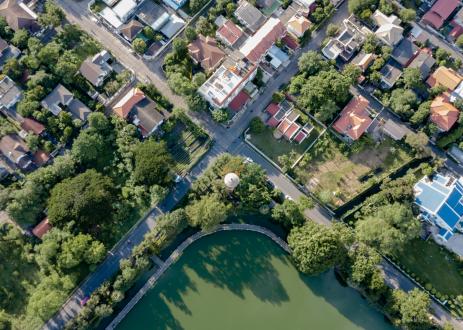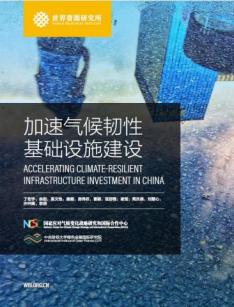Accelerating Climate-resilient Infrastructure Investment in China
This report focuses on the three types of climate risk – namely agricultural drought risk, urban waterlogging and coastal storm surges – that China is most likely to face in the future. We assess the expected costs and benefits associated with climate-resilient infrastructure investment and explore potential financing instruments and mechanisms that could help leverage finance. The findings of this study are expected to inform China’s National Climate Change Adaptation Strategy 2035, accelerate climate adaptation action across governments at all levels during the 14th Five-Year Plan, and equip policymakers and researchers with a concrete research base and methodological framework to advance climate adaptation actions.
In August 2021, the latest report of the Intergovernmental Panel on Climate Change (IPCC) suggests that the 1.5°C global warming threshold is likely to be breached in the next 20 years. If such warming continues, it will result in irreversible impacts on nature and ecosystems. While continuous efforts are essential to mitigate climate change, we must simultaneously accelerate the investment in climate adaptation to build resilience to climate change and reduce any associated damage. China is among the countries that are most affected by climate change. It is estimated that climate risks, mainly drought, flooding and storm surge, will increased in the future, threatening people’s life and economy. In the face of this grim situation, action on climate adaptation must be undertaken now. Nevertheless, among all the key areas which are involved in climate adaptation, enhanced climate resilience in infrastructure is particularly important for protecting human life and avoiding economic losses from climate risks.
For this purpose, this report systematically defines and analyzes climate risks and the corresponding climate-resilient infrastructures. Building on three case studies, it evaluates future agricultural drought risks, urban waterlogging and coastal storm surges faced respectively by three Chinese locations – Ningxia, Wuhan, and Shenzhen. Our findings suggest that climate risks faced by these three regions will continue to increase and it is necessary to improve the resilience of the infrastructures to cope with the risk. Based on a triple-dividend (i.e. avoid damage loss, economic benefit, and social and environmental benefit) framework, this report systematically analyzes the return on investment of three types of climate-resilient infrastructure– namely water-saving irrigation facilities, sponge city construction, and grey-green seawall construction – in the three case study areas. Our estimate shows that every RMB 1 invested can generate RMB 2-20 of returns over a period of 30 years (See Figure 1). Therefore, it is imperative to scale up these climate-resilient infrastructures across China in order to ensure food security and protect urban infrastructure and coastlines under severer climate change impacts.
However, climate-resilient infrastructure in China faces significant financial shortfalls. We need to quickly fill the annual funding gap of nearly RMB500 billion over the next five years by developing new financing mechanisms and attracting more private investment. Leveraging international experience, our findings suggest that in the three case study areas, innovative financial instruments – such as Resilience Bonds (RB), Public Private Partnerships (PPP) and Resilience Impact Bonds (RIB) – have the potential to create effective new finance streams to fund climate-resilient infrastructure.
Finally, this report discusses the main challenges facing climate-resilient infrastructure investment and puts forward concrete actions for the Chinese government to address them.
Projects

Low-Carbon and Climate-Resilient Cities
Visit ProjectLow-Carbon and Climate-Resilient Cities Project explores urban strategies that combine climate mitigation and adaptation, to accelerate zero-carbon, climate-resilient, and inclusive urban transitions, enhance local capacities on climate emergency, and help China achieve its dual carbon goals.
Part of Sustainable Cities
